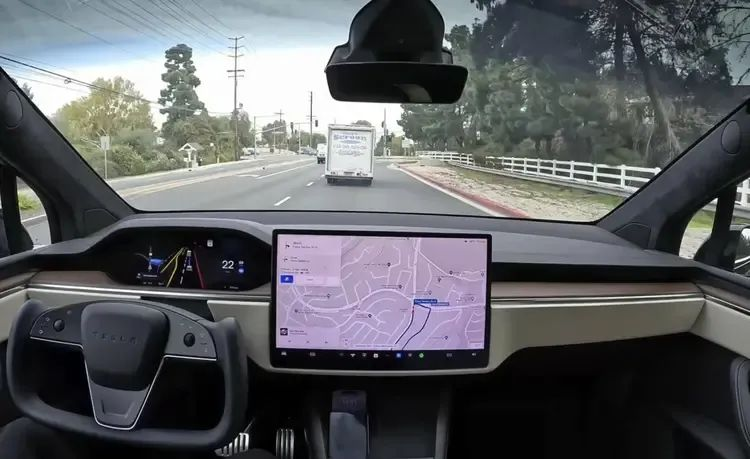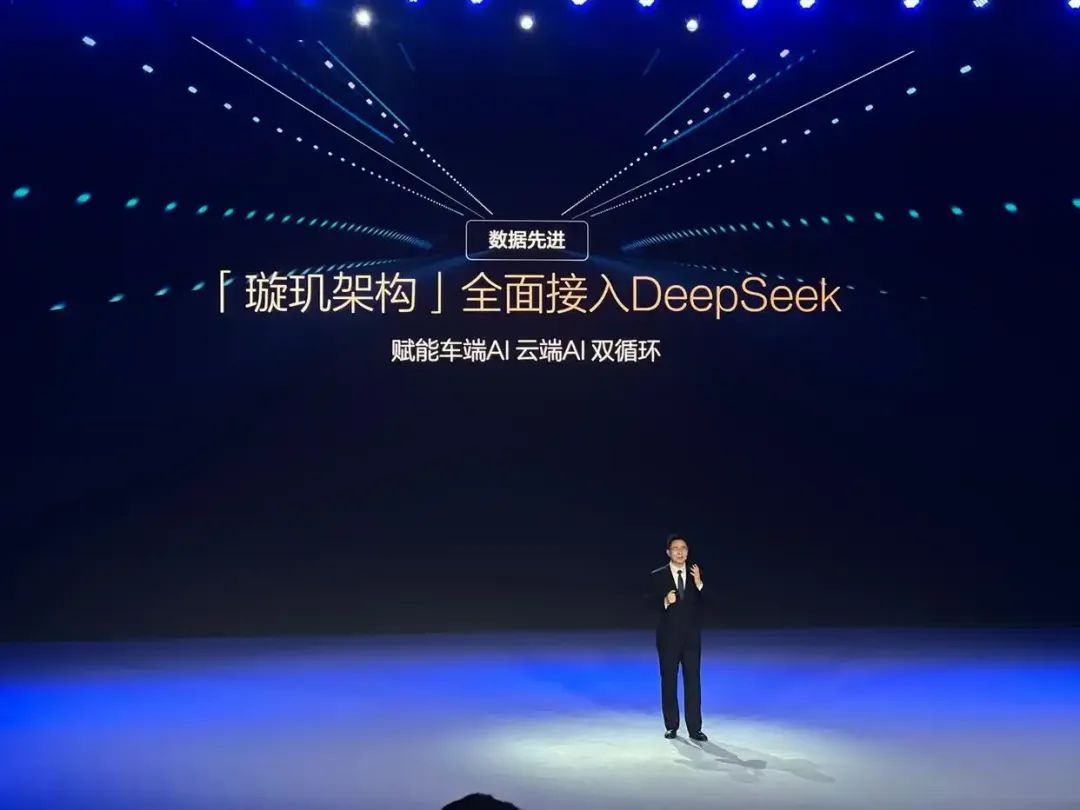Car Companies Embrace DeepSeek: A Behind-the-Scenes Perspective
![]() 02/18 2025
02/18 2025
![]() 446
446
Unmasking the Hype or Catalyzing Innovation
Author | Wang Lei
Editor | Qin Zhangyong
The automotive industry has finally caught the wave of DeepSeek.
Even as we marvel at DeepSeek's meteoric rise as the fastest-growing internet product by user numbers, domestic car manufacturers can barely contain their excitement and are rushing to latch onto this trend.
BYD, Geely, Great Wall, Chery, Dongfeng... All major car companies have now announced their integration with DeepSeek.
It seems as though car companies have achieved AI parity overnight.
On the other hand, companies with intelligent labels, such as Huawei, Li Auto, XPeng, Xiaomi, and NIO, remain relatively calm about DeepSeek.
Upon reflection, let's consider a few pertinent questions:
What does the integration of DeepSeek mean for the general public? What implications does it hold for the industry?
With car companies so readily and swiftly integrating DeepSeek, can it truly herald an "iPhone moment" for the smart car industry?
Actually, no.
01 DeepSeek Peels Away the Veneer
Let's cut to the chase and pose these questions to the "party involved" first.
Q: As an executive in charge of intelligence at a major car company, how do you perceive the surge in DeepSeek's popularity? Given that car companies have officially announced their integration with DeepSeek, what does this signify for intelligence? Please be candid.
DeepSeek's response is surprising:
As a seasoned veteran in the battleground of automotive intelligence, I'll be frank: The popularity of DeepSeek is not a technological revolution but a collective anxiety attack amid the intelligence arms race among car companies. When cabin computing power is stacked to 1000 TOPS, and companies are still competing over the smoothness of boot animations, and when LiDARs abound to form a matrix but even automatic parking is not executed well, the industry needs a new adrenaline rush to stay afloat.
The collective fawning over large models by car companies is essentially a self-rescue maneuver after the collapse of the intelligent narrative.
The arms race of hardware stacking over the past five years has hit its physical limit. At this juncture, the sudden emergence of an articulate AI brain is akin to a lifesaver grasped by a drowning person.

To annotate this frenzy, DeepSeek has even provided a trend judgment.
This frenzy conceals three fatal illusions:
Technological Hollowness: The "deep cooperation" of most car companies is nothing more than a shell game involving API interfaces, and the black box of algorithms leads to a blurring of the safety boundaries of vehicle control.
Scenario Mismatch: Running copywriting generation on large models within the in-car system is akin to installing a washing machine in an F1 racing car, resulting in a severe imbalance between computing power consumption and user experience.
Cost Black Hole: The monthly cloud inference cost per vehicle may exceed the entire vehicle's gross margin.
True intelligent breakthroughs should establish a technological moat within the closed loop of perception-decision-execution.
The integration of large models is not the end goal but a mirror reflecting the truth. Looking back in three years, 90% of today's "strategic collaborations" being celebrated with much fanfare will become electronic tombstones in the graveyard of intelligence. Those that will survive are undoubtedly the hardcore players who have embedded AI capabilities into real battlefields such as chassis control, thermal management, and battery health prediction.
Is this answer a bit eye-opening?
Next, let's delve into a more conventional version of the answer:
The phenomenon of car companies announcing their integration with DeepSeek reflects the intensifying competition in the intelligence of the current automotive industry and the trend of AI technology penetrating traditional industries.
After the electrification phase has plateaued, intelligence has emerged as a new competitive arena. Integrating large models like DeepSeek can swiftly compensate for car companies' shortcomings in areas such as natural language interaction and scenario-based services. Furthermore, homogeneous smart cabin functions (like voice control and navigation) can no longer form barriers, and integrating more potent AI models can create new selling points like "anthropomorphic interaction" and "scenario-based services".
From a cost perspective, developing in-house AI large models necessitates billions of investments and long-term accumulation, whereas integrating mature solutions can quickly realize function deployment, which is particularly enticing for small and medium-sized car companies.
Overall, car companies embracing AI large models is an inevitable technological evolution, but the real competition lies not in whether to integrate technology but in how deeply to couple technology with vehicle attributes. Just as in the development of smartphones, the ultimate winners will not be the models with the most impressive parameters but the ecosystem builders that can reimagine user experience.
In contrast, the conventional version of the answer is somewhat unremarkable, and the viewpoint of the candid version clearly seems to peel away a layer of superficial veneer.
After DeepSeek's phenomenal popularity, many believe that car companies can easily and swiftly integrate DeepSeek, ushering in an "iPhone moment" for the smart car industry. When this question is posed to DeepSeek, it does not concur.
If smart cars truly usher in an "iPhone moment," it will undoubtedly not be the current "great leap forward" in the industry where suppliers assemble AI modules on an assembly line. Instead, it will necessitate a complete overhaul from electronic architecture, software ecology to user experience.
The "convenience and speed" of car companies integrating DeepSeek is nothing more than a label-driven frenzy amid industry anxiety. It appears to be a technological leap forward but is essentially a false proposition matured by capital. The so-called "iPhone moment" is more akin to a "Emperor's New Clothes" fabricated by car companies and suppliers in collusion with the capital market.
The integration of large models like DeepSeek into cars seems to unlock "intelligence" with a click, but in reality, car companies lack accumulation in core algorithms, data closed loops, and scenario understanding. This "outsourced intelligence" will only exacerbate industry homogeneity: all cars will be equipped with the same voice assistant and interactive interface, ultimately becoming puppets of supplier technical parameters.
When all cars claim to be "intelligent," it actually signifies that "intelligence" has devalued.
02 Guarding a Treasure Trove
As DeepSeek points out, based on current performance, it is still premature for the industry to enter an "iPhone moment".
Judging from the feedback of various car companies that have integrated DeepSeek, most adopt the approach of integrating the distilled DeepSeek-R1 model with their own models at the underlying algorithm level.
The role of such DeepSeek enhancements can essentially be summarized as optimizing voice assistants and enhancing the interactive experience.

However, using DeepSeek solely as a voice assistant would be a waste of its potential, as it goes far beyond that. Beyond smart cabins, it is more crucial to leverage its capabilities to propel advancements in smart driving.
The reason behind DeepSeek's R1 model achieving "phenomenal" popularity is twofold: one is its openness, and the other, and most importantly, is that during training, DeepSeek's video memory usage is only 5%-13% of traditional models, and its inference cost is as low as 1/70 of GPT-4 Turbo.
Additionally, DeepSeek employs reinforcement learning combined with a reward model, which, compared to current rule-based algorithms, possesses superior reasoning capabilities and is highly suited for solving complex logical problems.
Currently, mainstream end-to-end smart driving is essentially still rule-based algorithms, with imitation learning being the primary approach during model training. As the name suggests, it involves imitating human driving.
For instance, Tesla, BYD, and Huawei all collect vast amounts of driving data from point A to point B and feed it into the system. Obviously, this approach ultimately trains smart driving systems that are on par with human driving.

However, reinforcement learning is vastly different because it does not learn the driving process but, through continuous trial and error, discovers the most efficient route from point A to point B.
This means it possesses stronger rigor and logic, coupled with an understanding of scenarios, and after cross-modal migration, it will be more proficient in perceiving road conditions, aiding the smart driving system in making more precise judgments.
This balance of "both performance and cost savings" addresses the pain points of car companies amidst price wars.
According to a GF Securities report, on the Qualcomm 8650 platform, DeepSeek can reduce the inference response time from 20 milliseconds to 19 milliseconds, while decreasing the computing power utilization rate from nearly 100% to 65%. The cost of running city NOA with 100 TOPS was originally about 7000 yuan, but with DeepSeek's intervention, it is expected to be achieved within 5000 yuan, and may even enable the Horizon Journey 6E chip to run city NOA.
For example, BYD has already utilized DeepSeek to enhance its smart driving capabilities because it can make precise judgments and decisions in complex traffic scenarios. This capability significantly improves the efficiency and quality of automated data generation, enabling BYD's smart driving system to iterate data and optimize models more swiftly.

Yang Xinyu, Chief Marketing Officer of Black Sesame Technologies, also stated, "The core value of large models like DeepSeek lies in propelling the upgrade of smart driving systems from 'perception-driven' to 'cognition-driven' through efficient reasoning capabilities on the end side. If DeepSeek can achieve large-scale application through low-cost computing power chips, it will accelerate the penetration of smart driving functions into the mass market."
However, DeepSeek is not a "cure-all." Reinforcement learning is prone to hallucination issues. For instance, sometimes when using the web version of DeepSeek, it may produce "nonsense," which is because reinforcement learning has gone too far and starts to emerge with content that does not align with facts.
The same holds true for smart driving. If the reward and fine-tuning mechanisms are not designed properly, it is highly likely to harbor the notion of "flying over," which requires car companies to possess robust data distillation capabilities. No matter how powerful the large model is, if the raw data is contaminated, the conclusions drawn will never be accurate.
But undoubtedly, DeepSeek is akin to a "treasure trove," yet humans may have only explored 10% of its potential. To truly enter the "iPhone moment" of the automotive industry, we need to let the bullets fly for a while longer.








